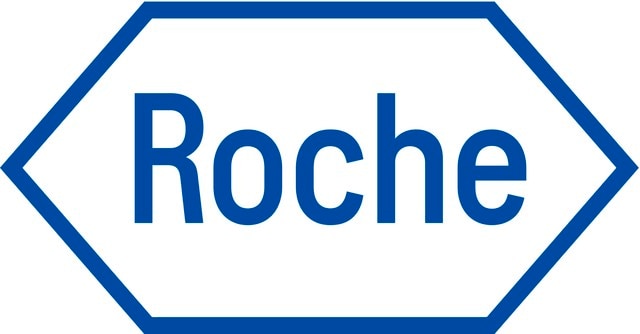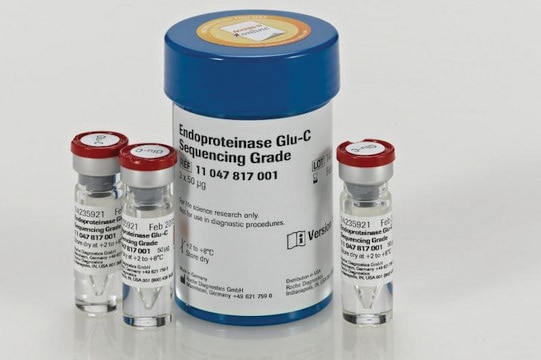TRYPSEQ-RO
Roche
Trypsin Sequencing Grade
from bovine pancreas
Synonym(s):
trypsin
About This Item
Recommended Products
biological source
bovine pancreas
Quality Level
form
lyophilized (salt-free)
specific activity
≥80 units/mg protein
mol wt
Mr 23.5 kDa
packaging
pkg of 4 × 100 μg (11047841001)
pkg of 4 × 25 μg (11418475001)
manufacturer/tradename
Roche
optimum pH
8.0
storage temp.
2-8°C
Related Categories
General description
Specificity
Specificity (HPLC, with Insulin Box):
Cleavage after 1 hour: ≥90%;
Unspecific cleavage products after 18 hours: ≤10%
Application
The enzyme is used for protein-structure elucidation, tryptic mapping, fingerprinting, sequence analysis, and translocation studies. Trypsin Sequencing Grade generates glycopeptides from purified glycoproteins and is suited for the digestion of proteins in polyacrylamide gels.
Quality
Preparation Note
Working concentration: 1/100 to 1/20 of the protein by weight (in solution); 1-5 μg/100 μl (for in-gel digest)
Storage conditions (working solution): A solution in 0.01% trifluoroacetic acid (TFA), (v/v) or 1 mM HCl may be used for one week at maximum, if stored at 2 to 8 °C. By incubation of proteins in solution at neutral to slightly basic pH-values partial autolysis might occur. For this application, Roche recommends Trypsin, Modified, Sequencing Grade.
Reconstitution
Other Notes
signalword
Danger
Hazard Classifications
Eye Irrit. 2 - Resp. Sens. 1 - Skin Irrit. 2 - STOT SE 3
target_organs
Respiratory system
Storage Class
11 - Combustible Solids
wgk_germany
WGK 1
flash_point_f
does not flash
flash_point_c
does not flash
Certificates of Analysis (COA)
Search for Certificates of Analysis (COA) by entering the products Lot/Batch Number. Lot and Batch Numbers can be found on a product’s label following the words ‘Lot’ or ‘Batch’.
Already Own This Product?
Find documentation for the products that you have recently purchased in the Document Library.
Customers Also Viewed
Our team of scientists has experience in all areas of research including Life Science, Material Science, Chemical Synthesis, Chromatography, Analytical and many others.
Contact Technical Service










